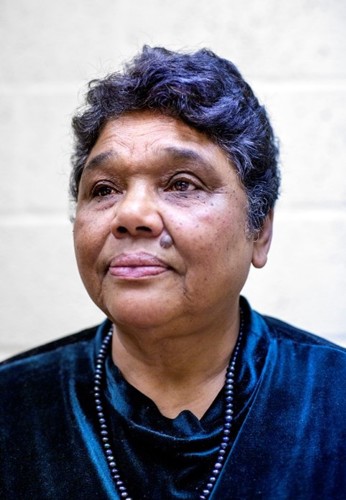Stories of a generation, told by the people themselves, play a powerful and insightful part of a new exhibition on how the Windrush Cymru Elders have influenced and enriched Welsh life.
The exhibition, titled ‘Windrush Cymru: Celebrating the Lives and Journeys of a Generation’, runs until 16 December at the Senedd in Cardiff Bay. This will also be one of the first opportunities for members of the public to access the site since the beginning of the pandemic.
Told in their own words, the exhibition features a glimpse at stories by 10 people – known as Windrush Cymru Elders - whose own journeys, or that of their family, brought them to Wales during a period of immigration between 1948 and 1988.
Invited by successive UK governments to address labour shortages, many members of Caribbean Commonwealth countries decided to emigrate and became known as the Windrush generation - which derives from the ship the ‘HMT Empire Windrush’ which brought one of the first groups to the UK in 1948.
On 22 September, the Windrush Cymru Elders visited the Senedd to see how their experiences have been brought to life by the exhibition which is part of Race Council Cymru’s Windrush Heritage Project, funded by The National Lottery Heritage Fund and delivered in partnership with the Senedd and Amgueddfa Cymru – National Museum Wales.
The stories map the routes which brought people from Caribbean Commonwealth countries to live in Wales and reflects what life was like for them when they arrived. It explores the challenges of building a new life in a country very different from their birthplace, finding work and the attitudes of people towards them, then and now.
|
Born in Mauritius in 1946, May Laida moved to Newport in 1965, joining her fiancé who had answered the government’s call for workers a few years earlier. “I didn’t know it was cold, because all my dresses were cotton, but luckily his auntie was good, gave me a fur coat. It was in May, but it was still very cold, because I just travelled with a cotton suit, and all my clothes I made to came here, was only made in cotton, nothing hot, because we didn’t know what to expect. I had a little boy then, and we lived in a bedsit, there was no bathroom. There was a bathroom but the landlord didn’t let us use it. So every Friday... I used to warm water, put it in a bucket, go in the toilet and wash, and wash the baby as well. Then we moved to another bedsit. We moved about three times in Newport, until we bought our house. It was very hard, but life was cheap. The house, the room was cheap and the wages was only under £10, so we lived on that. Plus he sent money to his mother as well, cos she was a widow”. |
Mrs Roma Taylor, Founder and Chair of the Windrush Cymru Elders, said: “I'm so pleased and so proud of this exhibition, it's a precious moment for each and every one of us. It's our stories and if we don’t get them out then no one will know.
The Windrush is a very painful and emotional subject but all of our stories have to go out. It's important to us, our children and our grandchildren and for schools. Everyone has to know we have been through a lot. God has brought us through. Tiger Bay was the best place to live, I came over in ‘59. Everybody was for everybody, everyone looked after everyone and you had no problems.”
Professor Uzo Iwobi, founder of Race Council Cymru and initiator of The Windrush Cymru – Our Voices, Our Stories, Our History project, said: “I am proud to have supported the Elders for many years, hearing their appeals for their stories to be captured for prosperity and continue their legacy for their children and grandchildren. I’m delighted that this project and exhibition have come to fruition – it’s incredibly important to see these stories being passed down to the next generation.”
Sioned Hughes, from Amgueddfa Cymru – National Museum Wales, said: “The Windrush Generation and their families have made an invaluable contribution to Wales, and we are proud to be working in partnership with Race Council Cymru and the Senedd to tell these important stories. We hope visitors take the opportunity to visit this powerful exhibition at the Senedd to find out how the Windrush Cymru Elders have influenced and enriched Welsh life.
The oral histories recorded by the Windrush Cymru project will become part of the archive collection at St Fagans National Museum of History, and we are immensely grateful to the Windrush Elders for sharing their lived experiences with us for future generations.“
chevron_right




